AccountaBuddy
UC San Diego Fullstack Project | Spring 2019

Background
Motivating yourself to go to the gym or lead a healthy lifestyle is hard. It is much easier to build habits when there are people you can do it with, and a way to maintain accountability. Nobody holds you more accountable than the people in your life.
For my web app development project at UC San Diego, I wanted to target building a healthy lifestyle, and worked with 3 other classmates to create an app that gamified accountability.
Problem Statement
How can we create an app that motivates people to make productive and beneficial changes together with their friends and family?
Target Audience
For our app, we wanted to focus on the target audience of:
1. Older clients that are trying to re-spark their lives by developing new habits or hobbies for themselves and/or the people close to them.
2. Parents trying to encourage their children to perform activities such as homework and chores.
App Criteria
To do this we came up with the idea to gamify accountability by having two users create an agreement with each other where if one user does not meet their agreement, they pay a small penalty to the other user. We aimed for our app to contain three criteria within our app:
1. What task each person needs to fulfill
2. The time they need to fulfill their task by
3. The amount of money that will be exchanged for not fulfilling the task
Storyboard
In order to illustrate our target audience and our envisioned usage of the app we came up with two different storyboards for each primary user.
Storyboard 1:
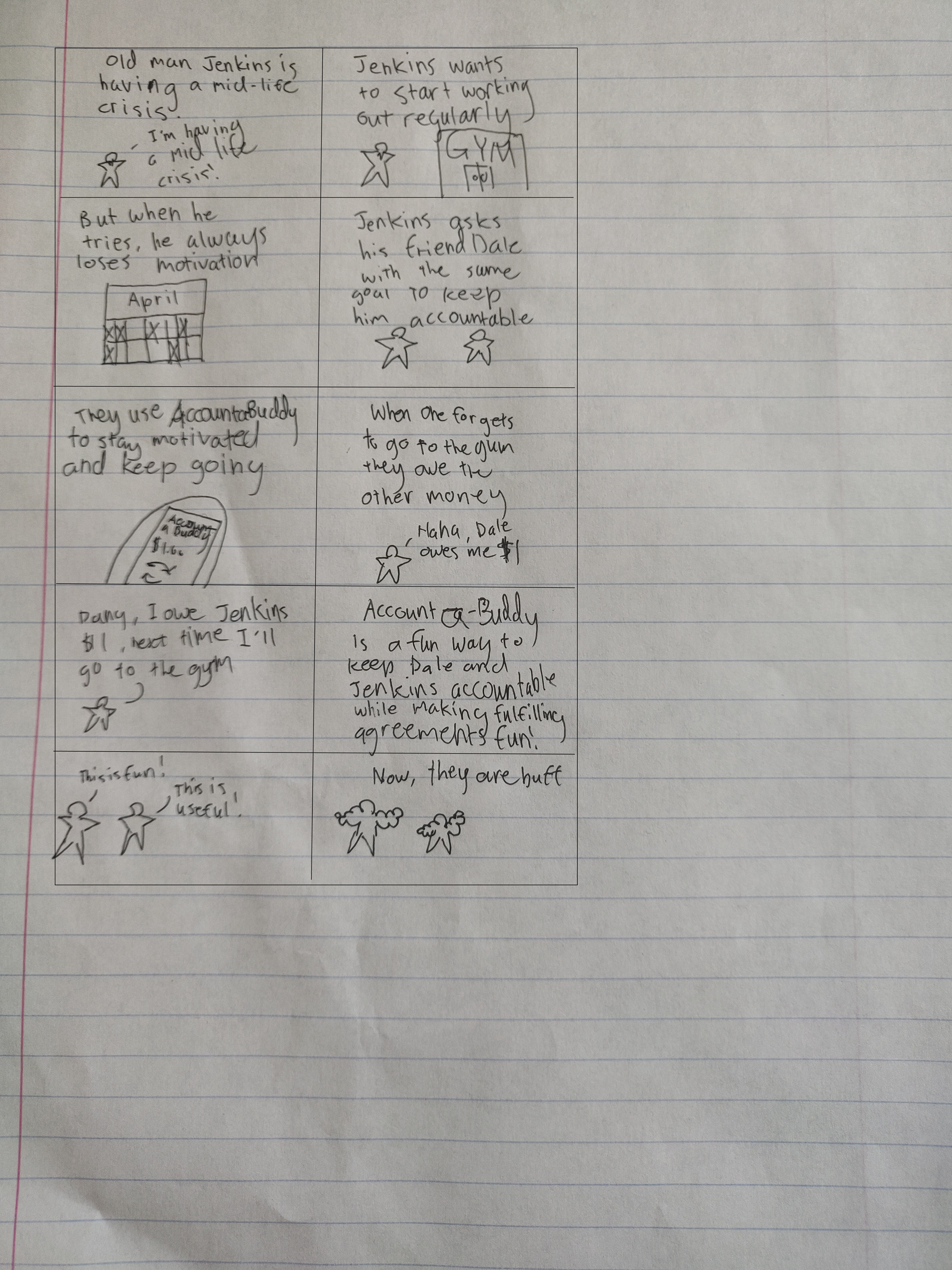
This storyboard illustrates an older person trying to revitalize their gym usage and using AccountaBuddy to partner with a likeminded friend to motivate themselves.
Storyboard 2:
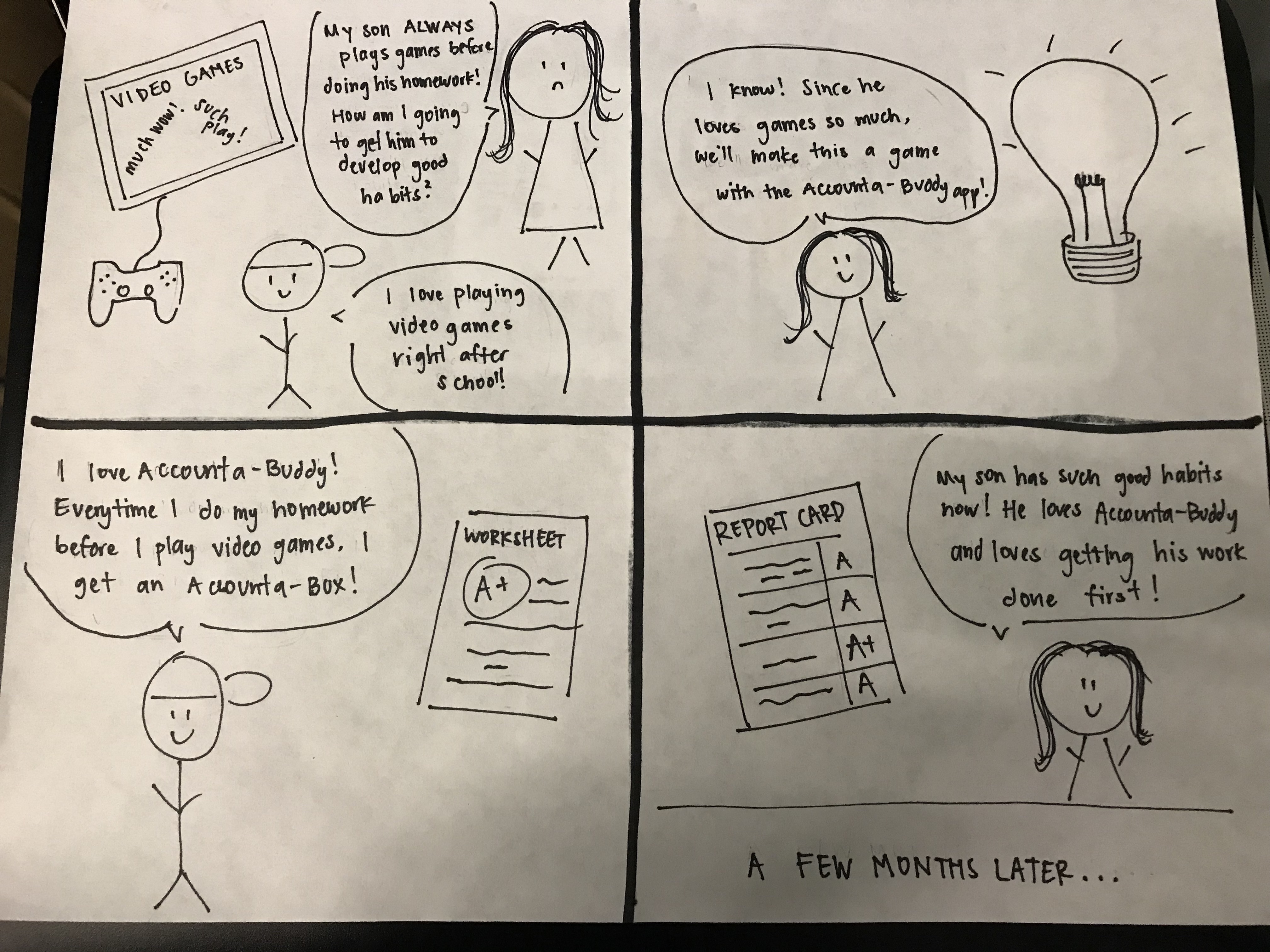
This storyboard illustrates the other intended user, a parent trying to push their child to have positive habits.
Prototype
While planning our app, we created two different prototypes showcasing potential features of our app.
Prototype 1:
The first prototype showcased a potential dashboard for our application, highlighting the main important features such as submitting evidence for task, getting notifications, creating new challenges and links to additional pages that allow users to see their history and friends' activities.
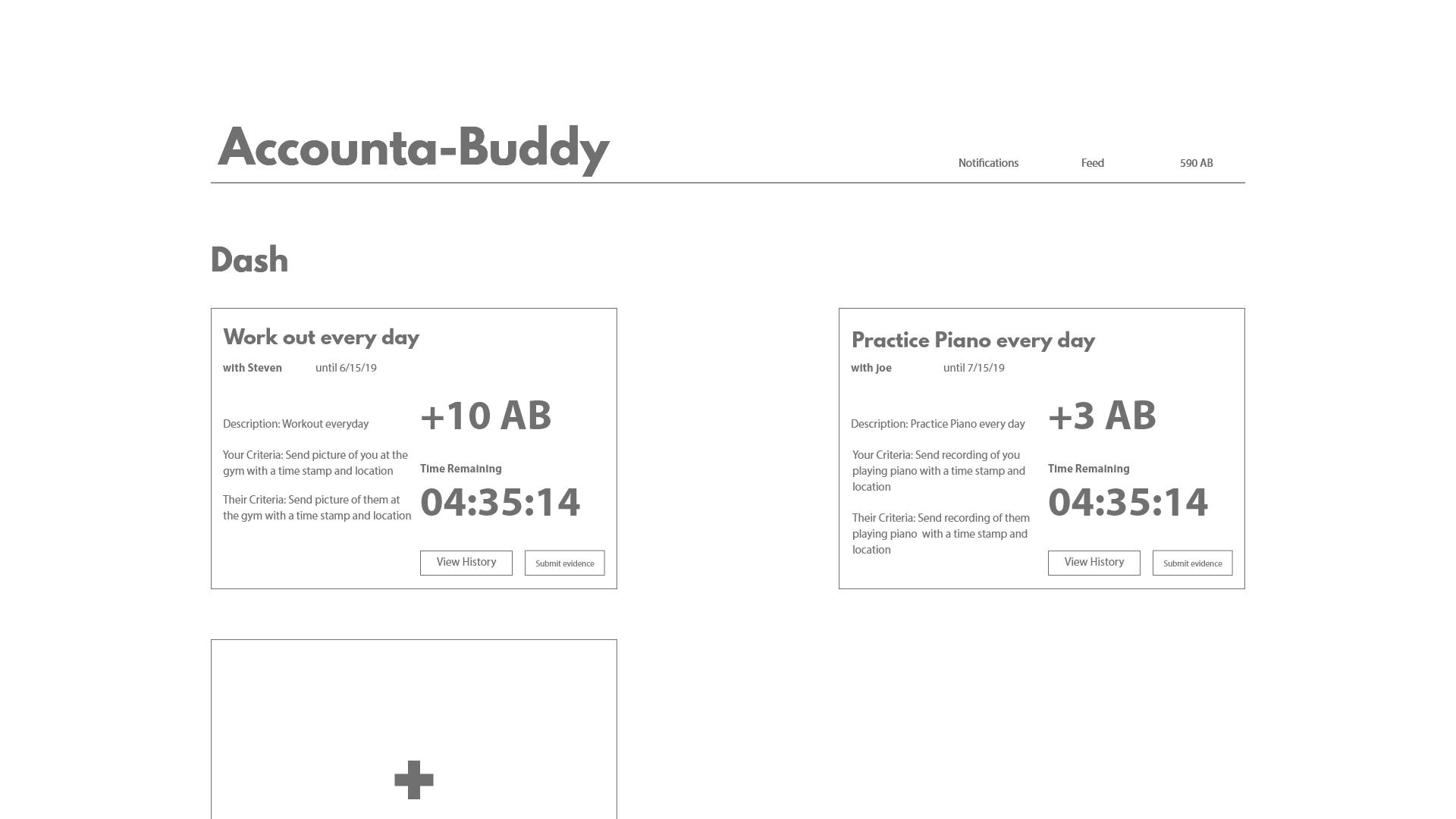
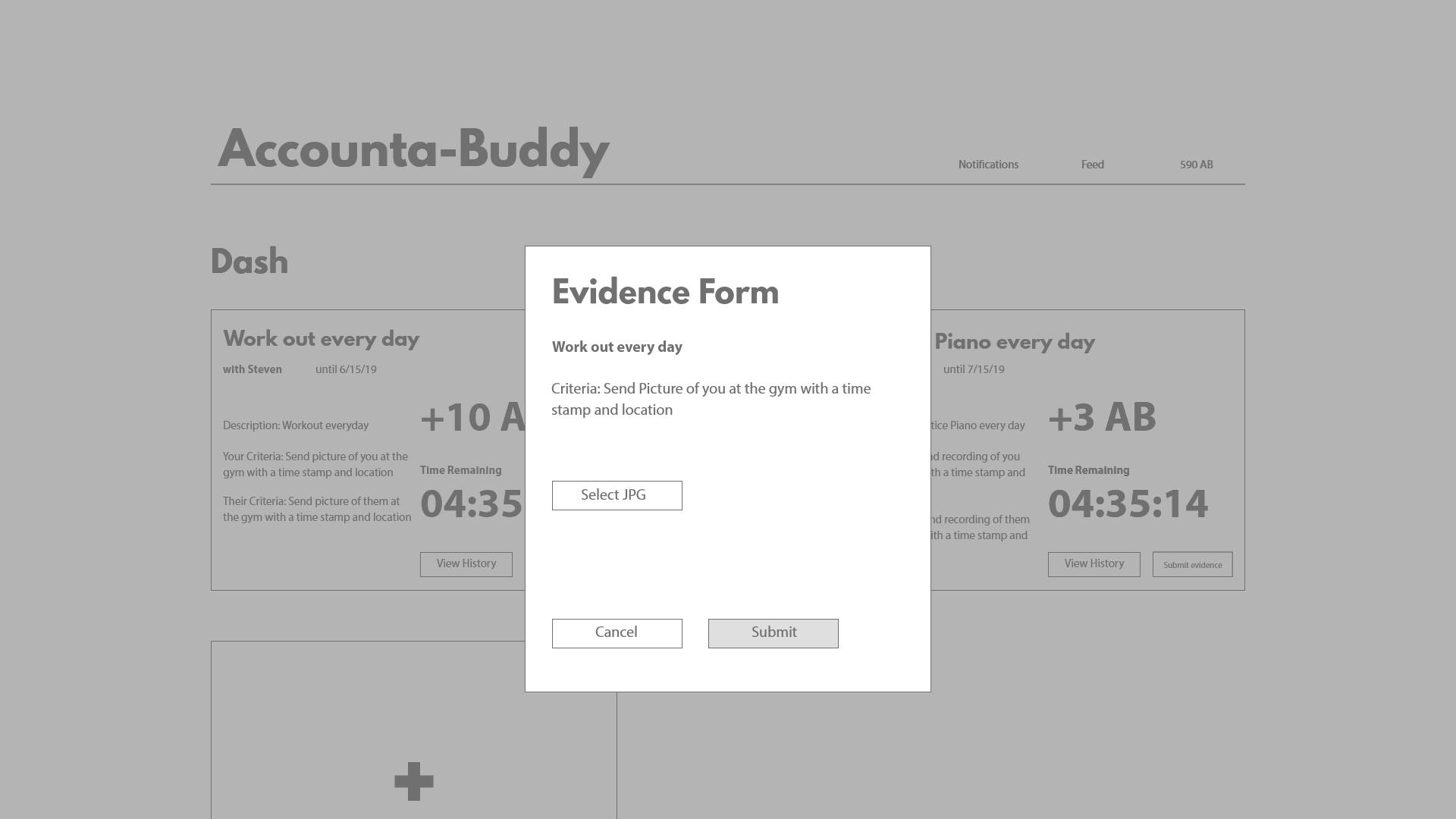
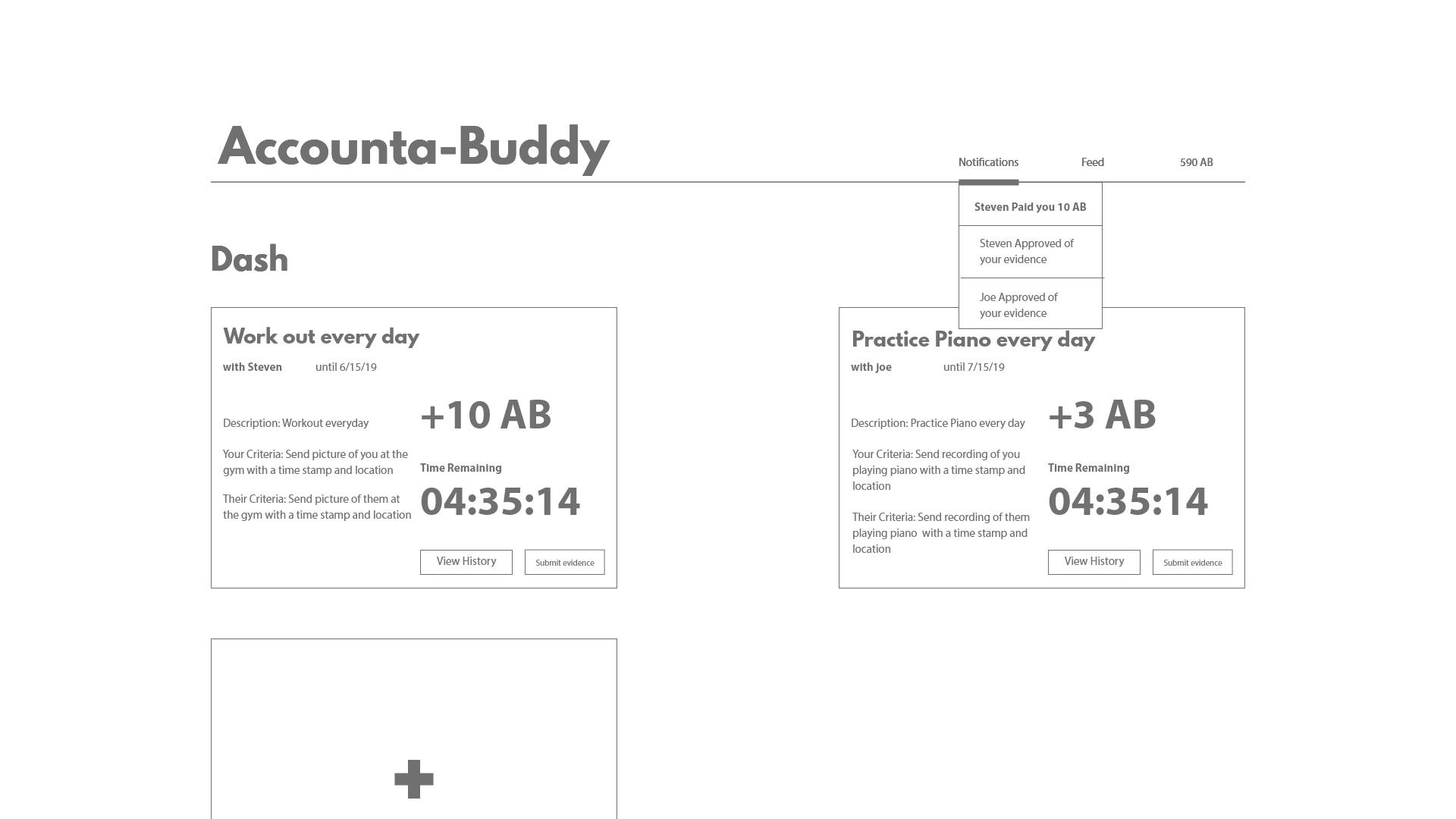
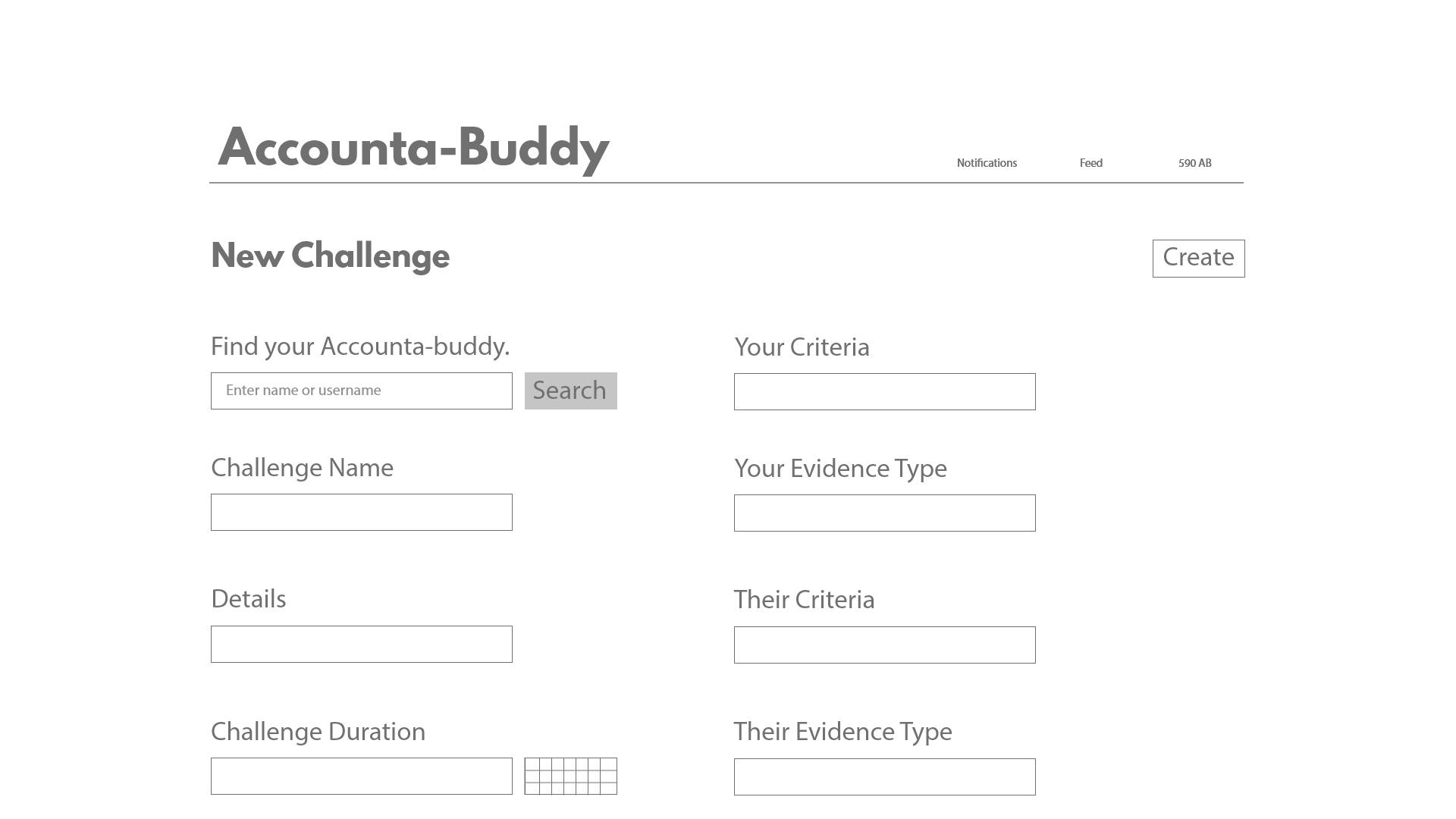
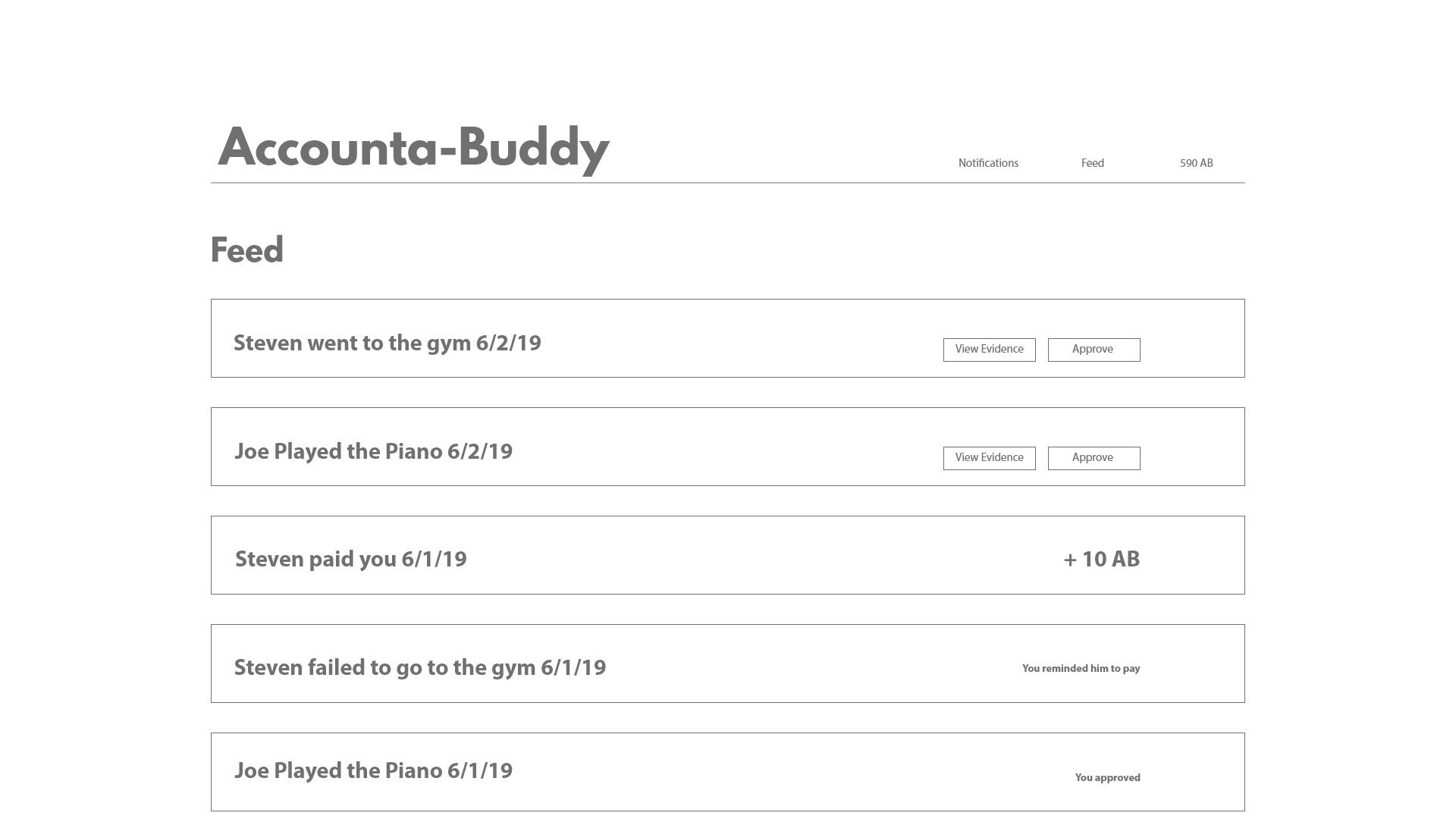
Prototype 2:
The second prototype showcases a different UI, with a design for how creating a new challenge might look like. Additionally it highlights the action of adding Accounta-Bux (digital money used for transactions) to the account. This prototype places more emphasis on the tasks to be completed rather than the social aspect with friend activities.
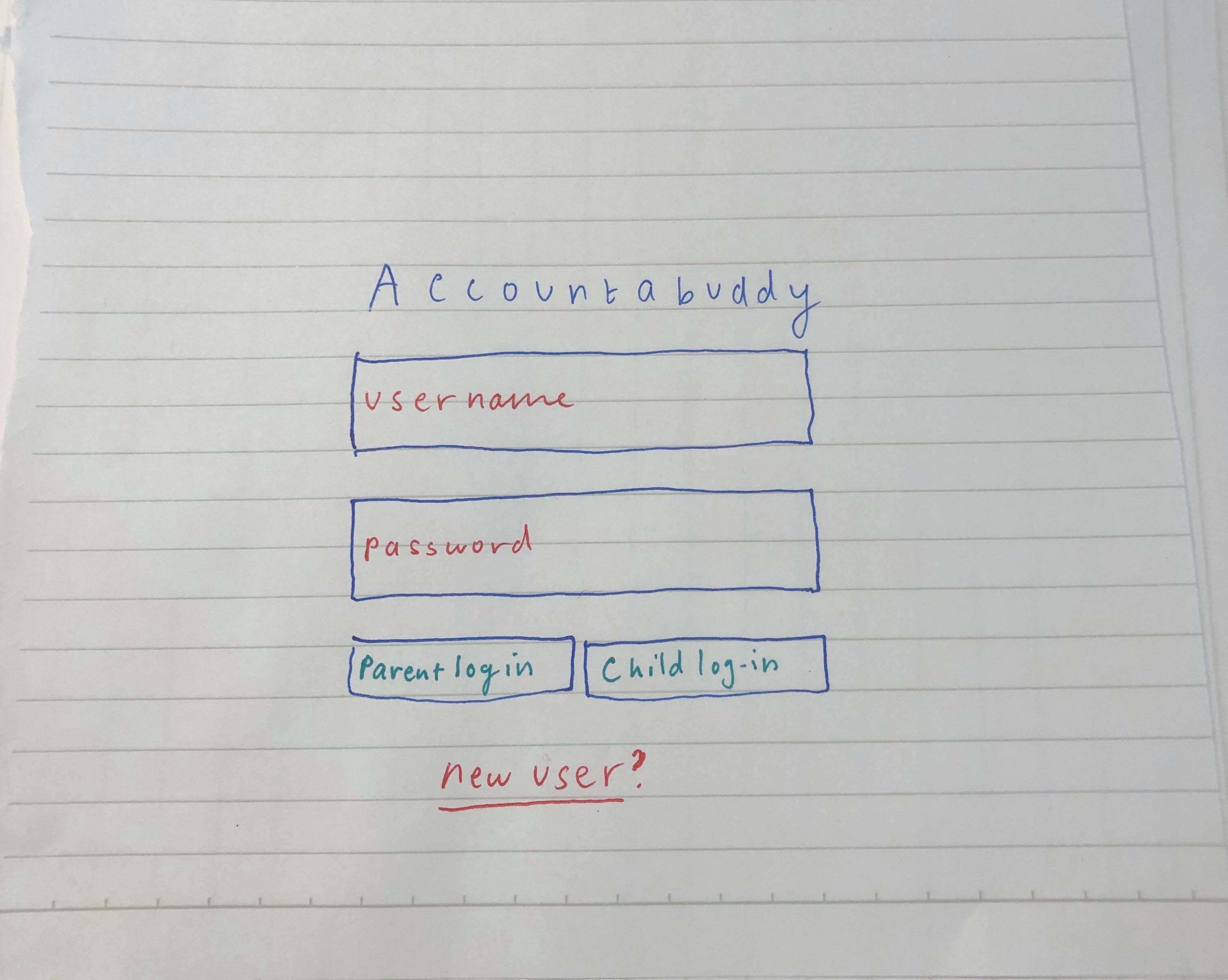
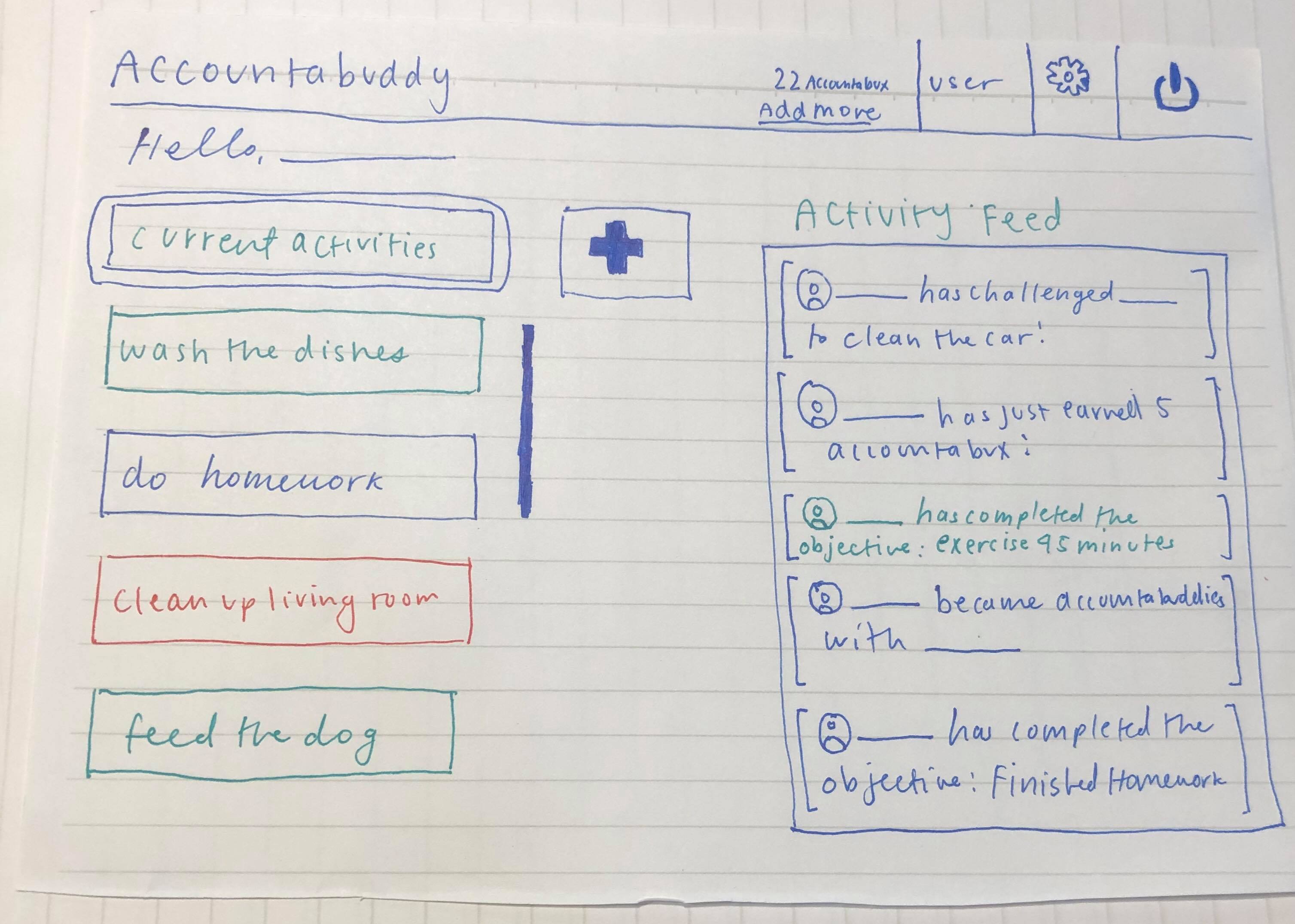
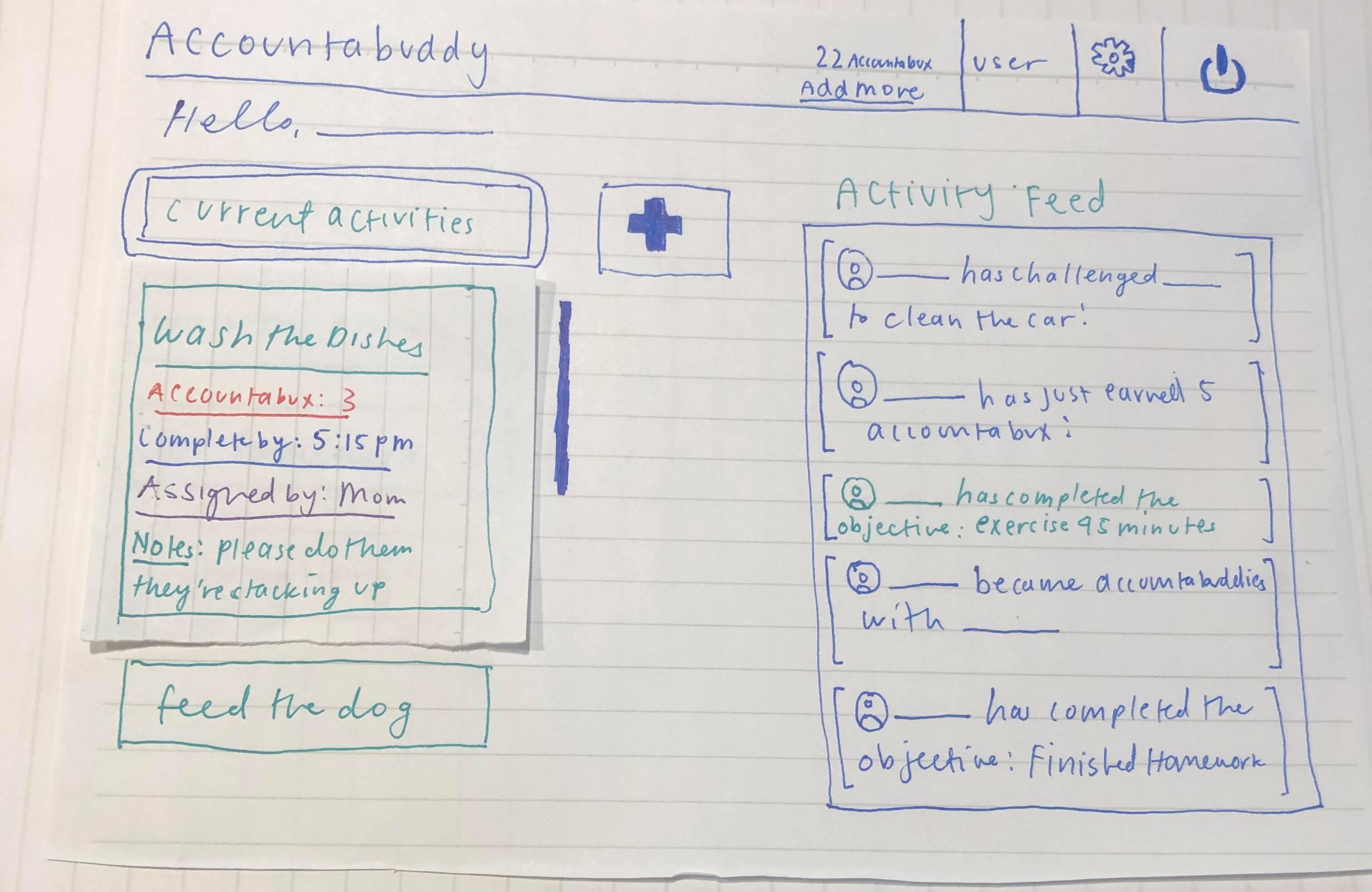
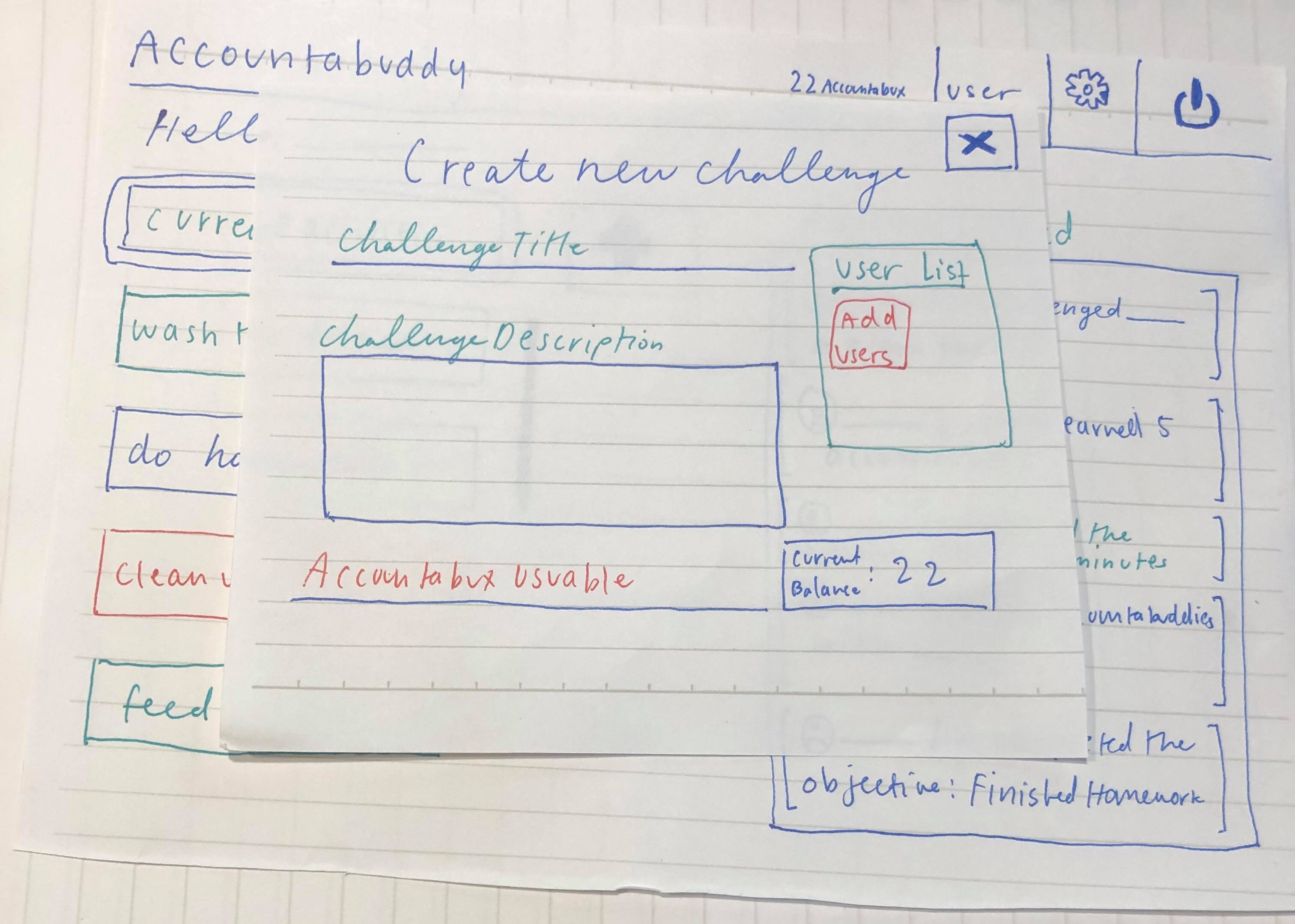
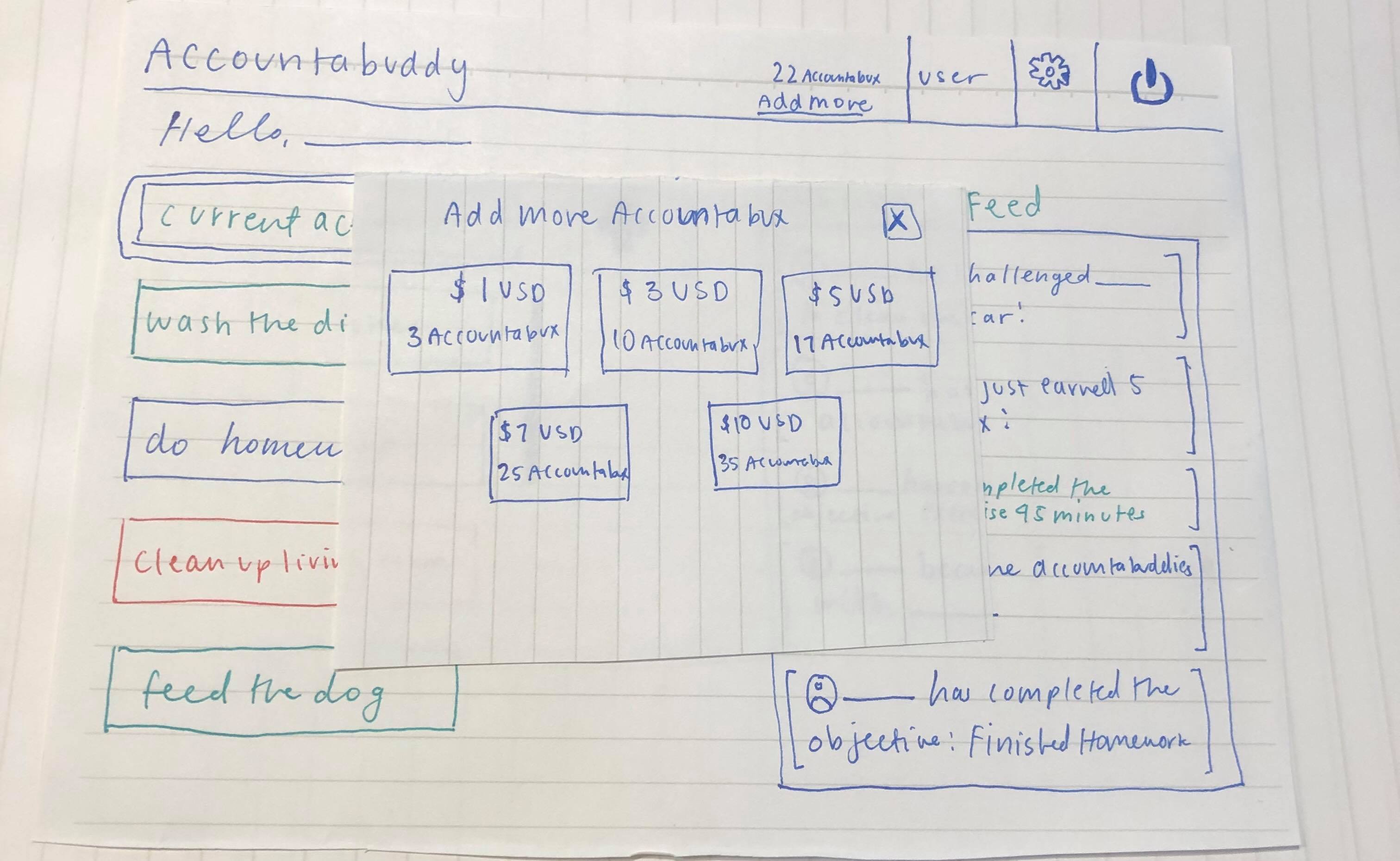
Main Features
For the scope of the project, we wanted to create a proof-of-concept version of the app with the following flow:
Users would put in a set amount of money into their account to be able to play the duration of the game/agreement. When a user successfully completes a task, they would send evidence in the form of a text description, picture, or video, ready for their Accounta-Buddy to review & confirm. If the user could not fulfill the task, the app will notify them to pay their Accounta-Buddy. If the user does not pay, the app will remind the user to pay up and a notification will be sent to their Accounta-Buddy where they can remind the user.
App Screenshots
Dashboard with reminders and checkins:
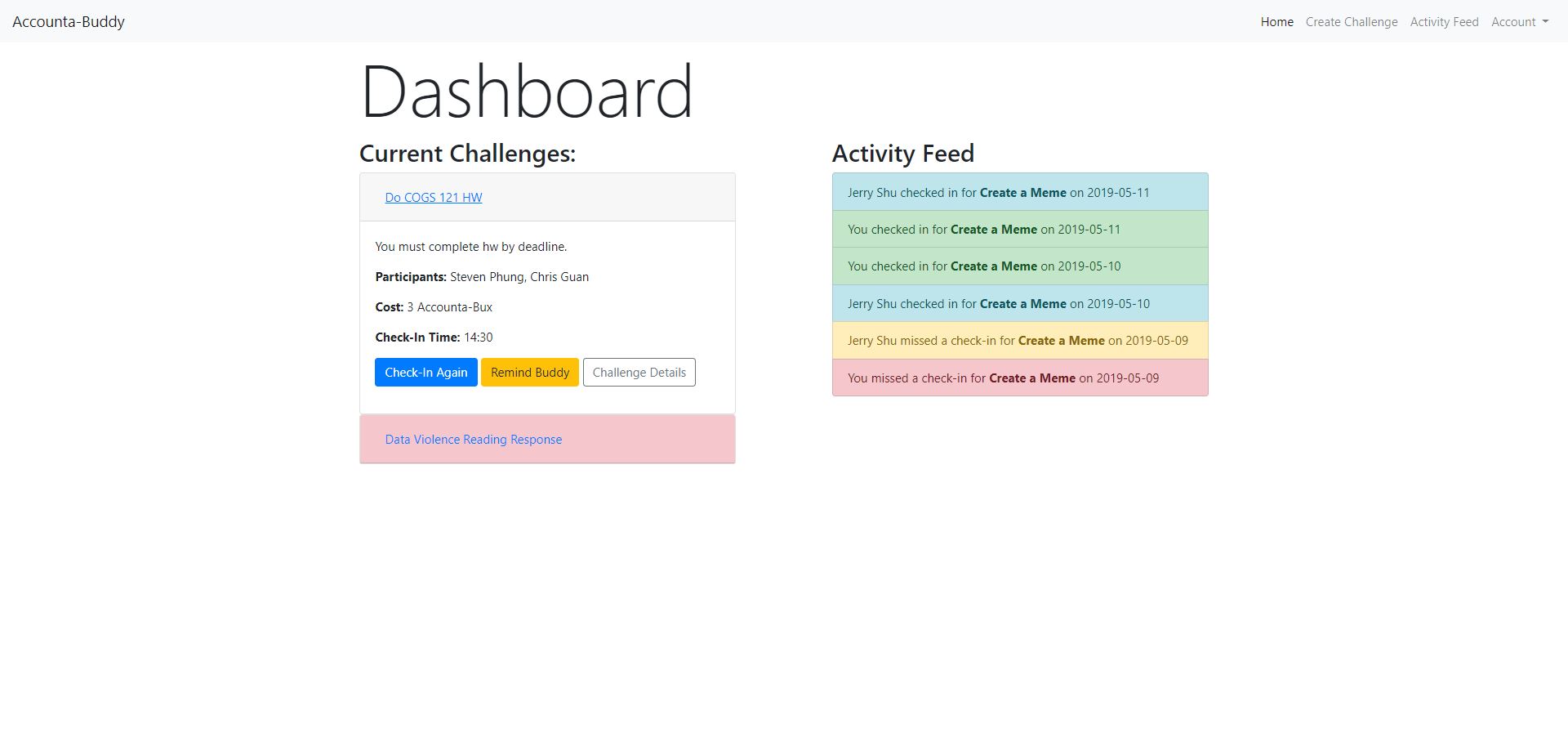

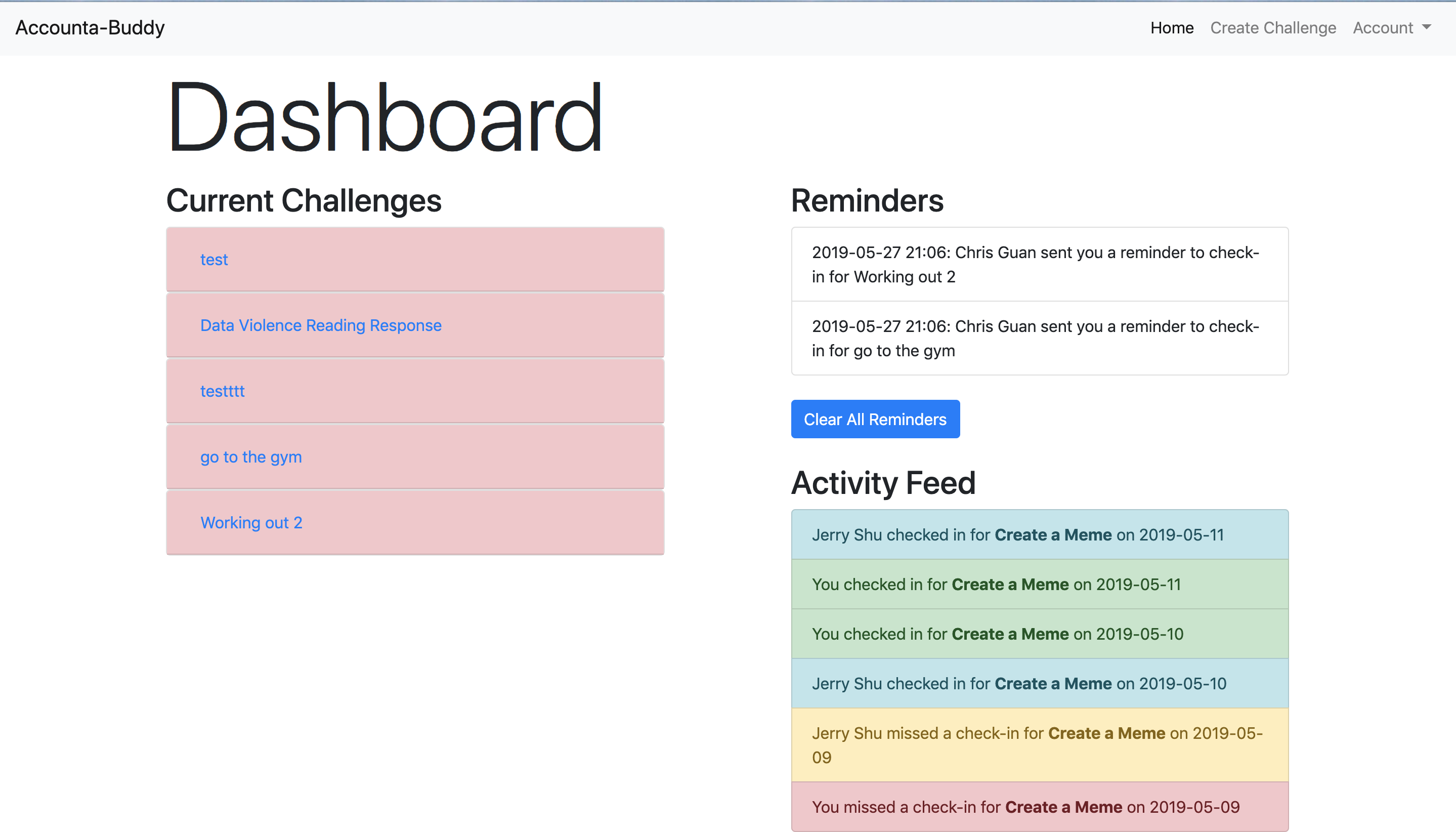
Challenge details expansion and checkin UI:
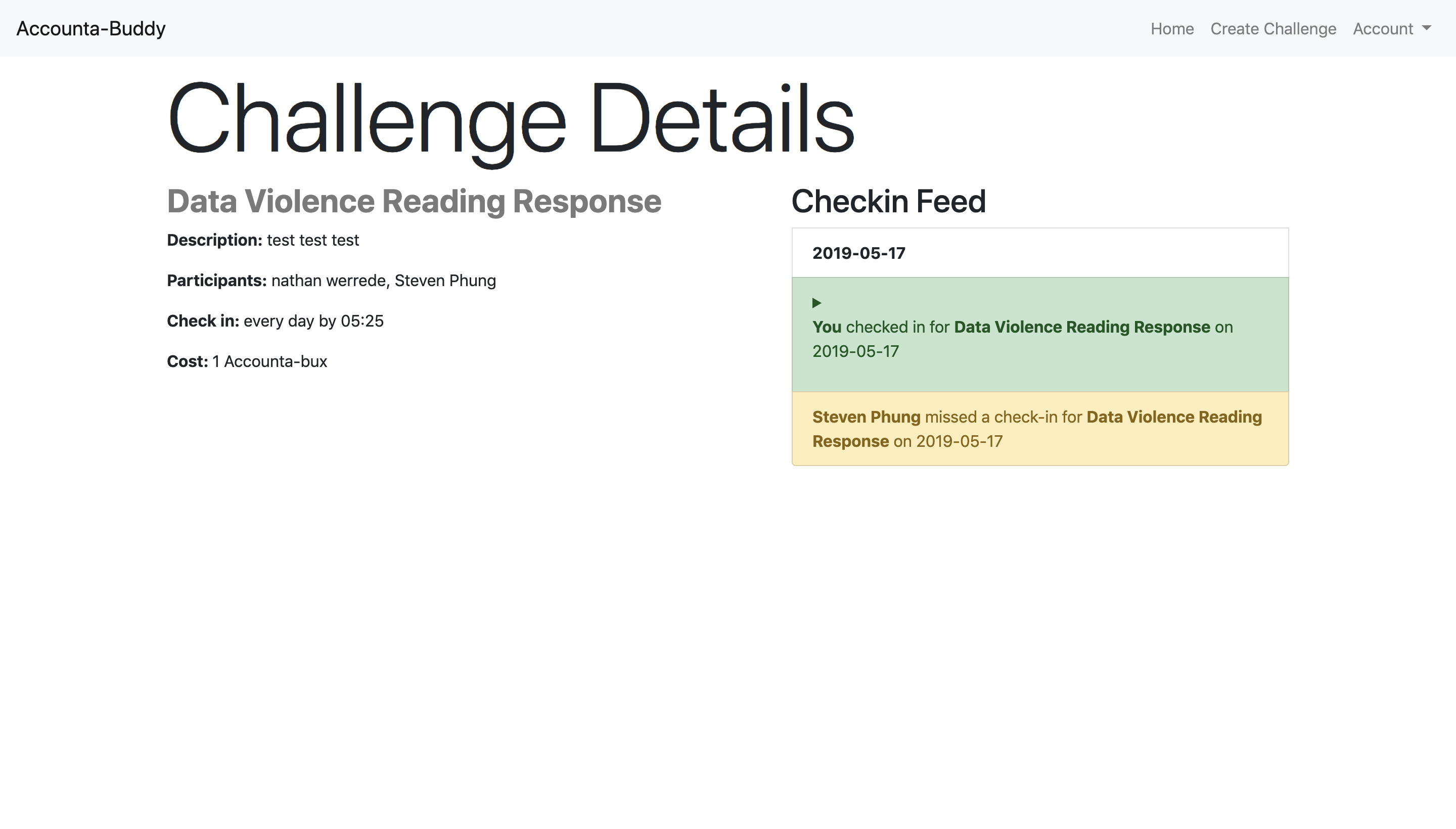
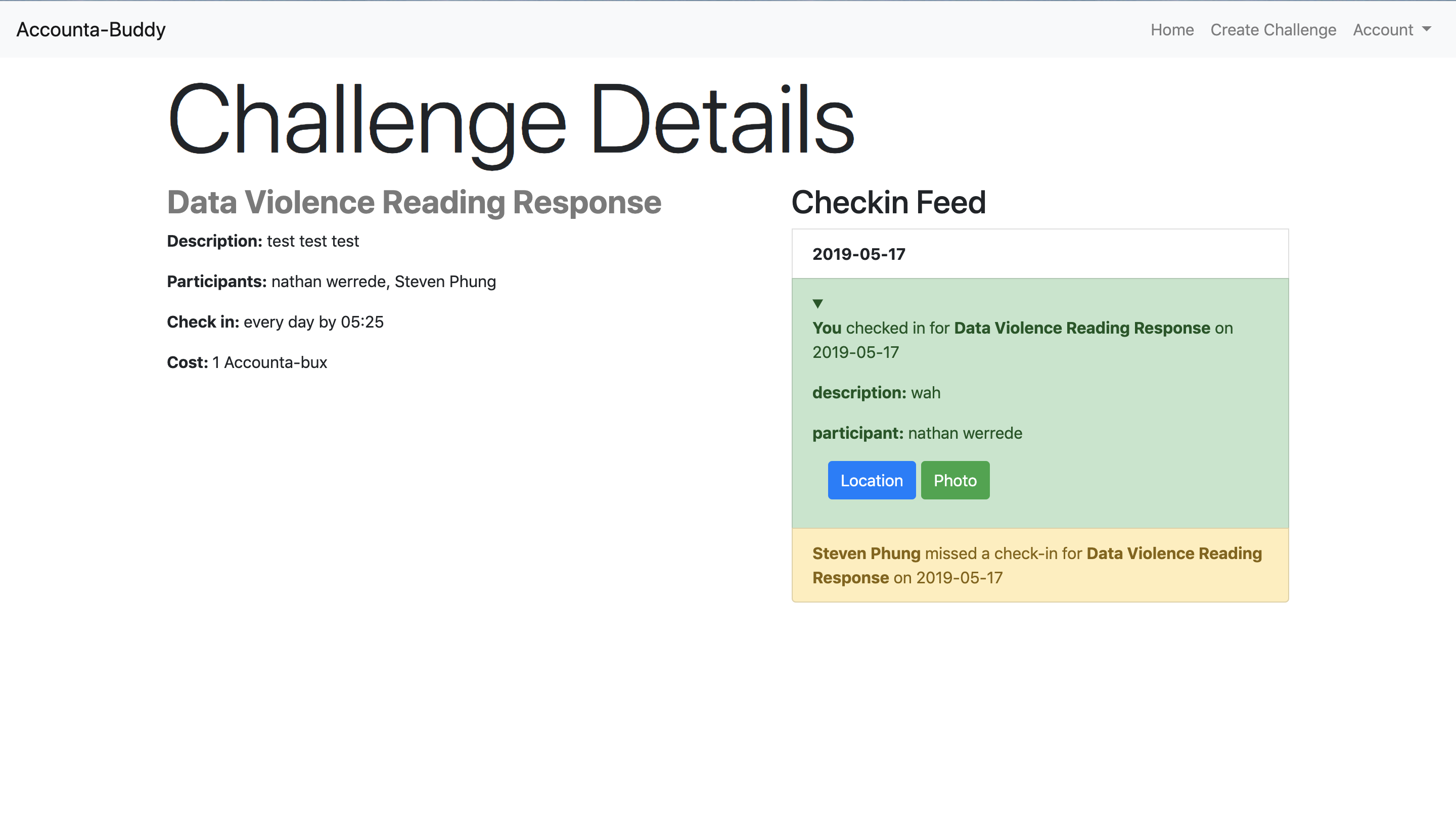
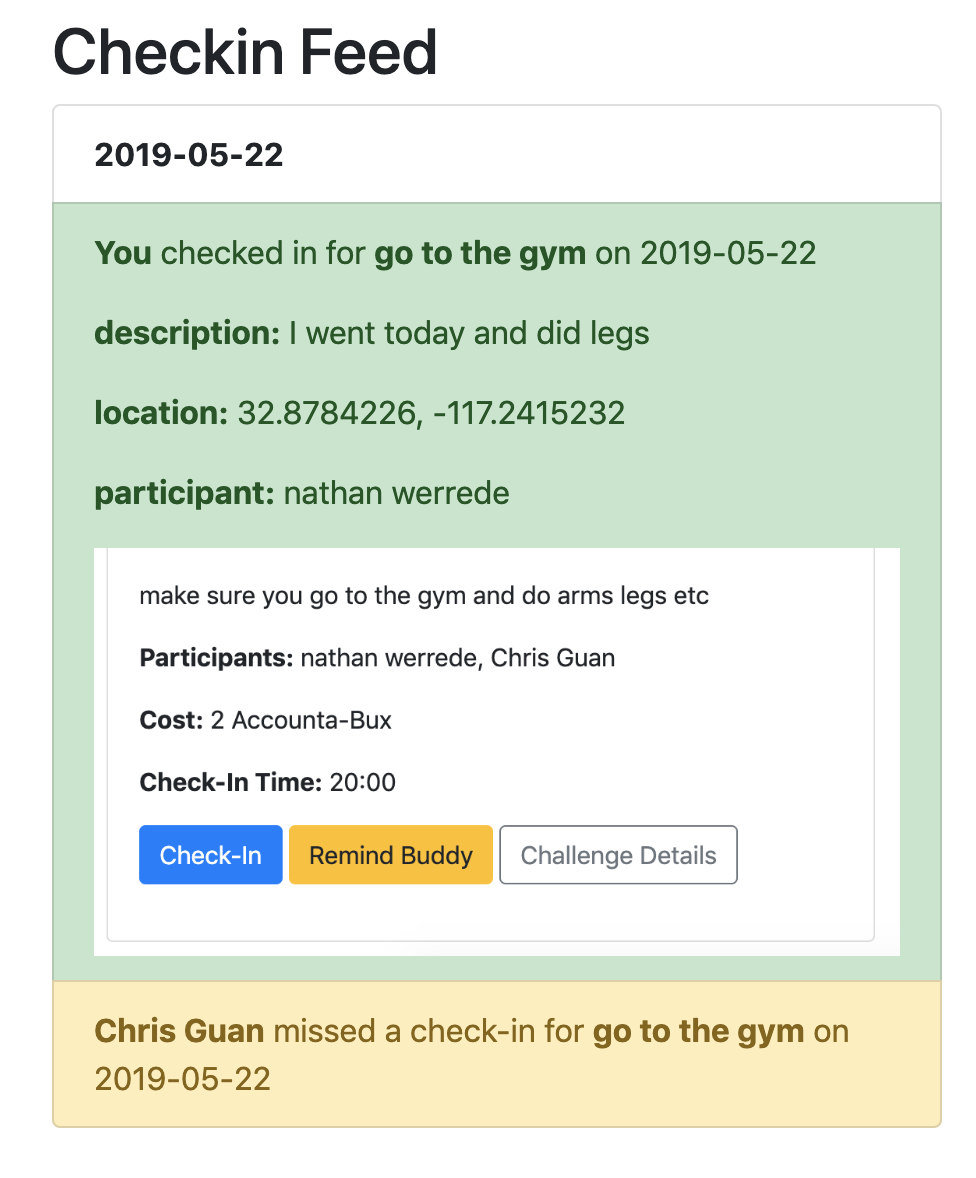
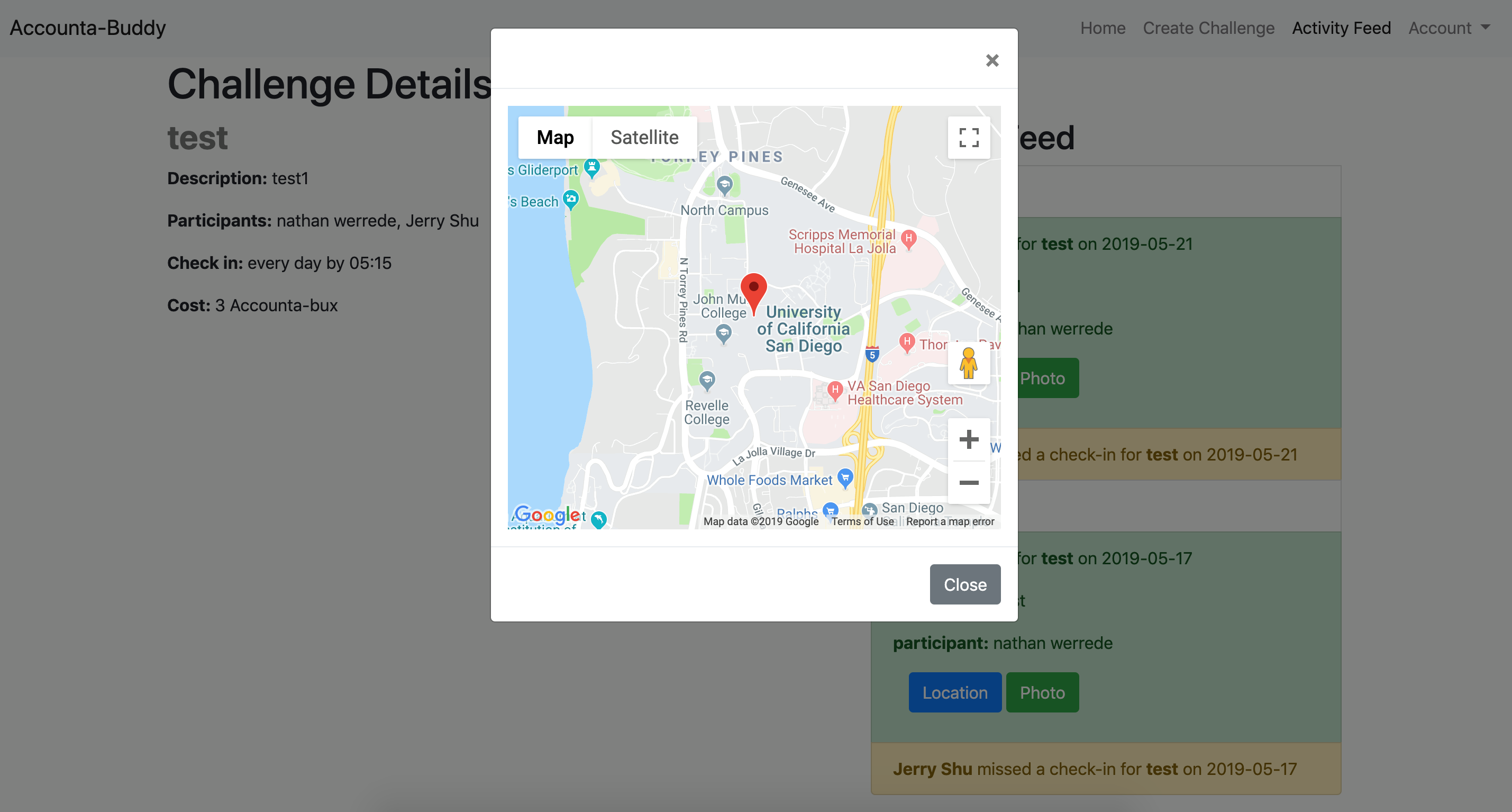
Add funds UI:
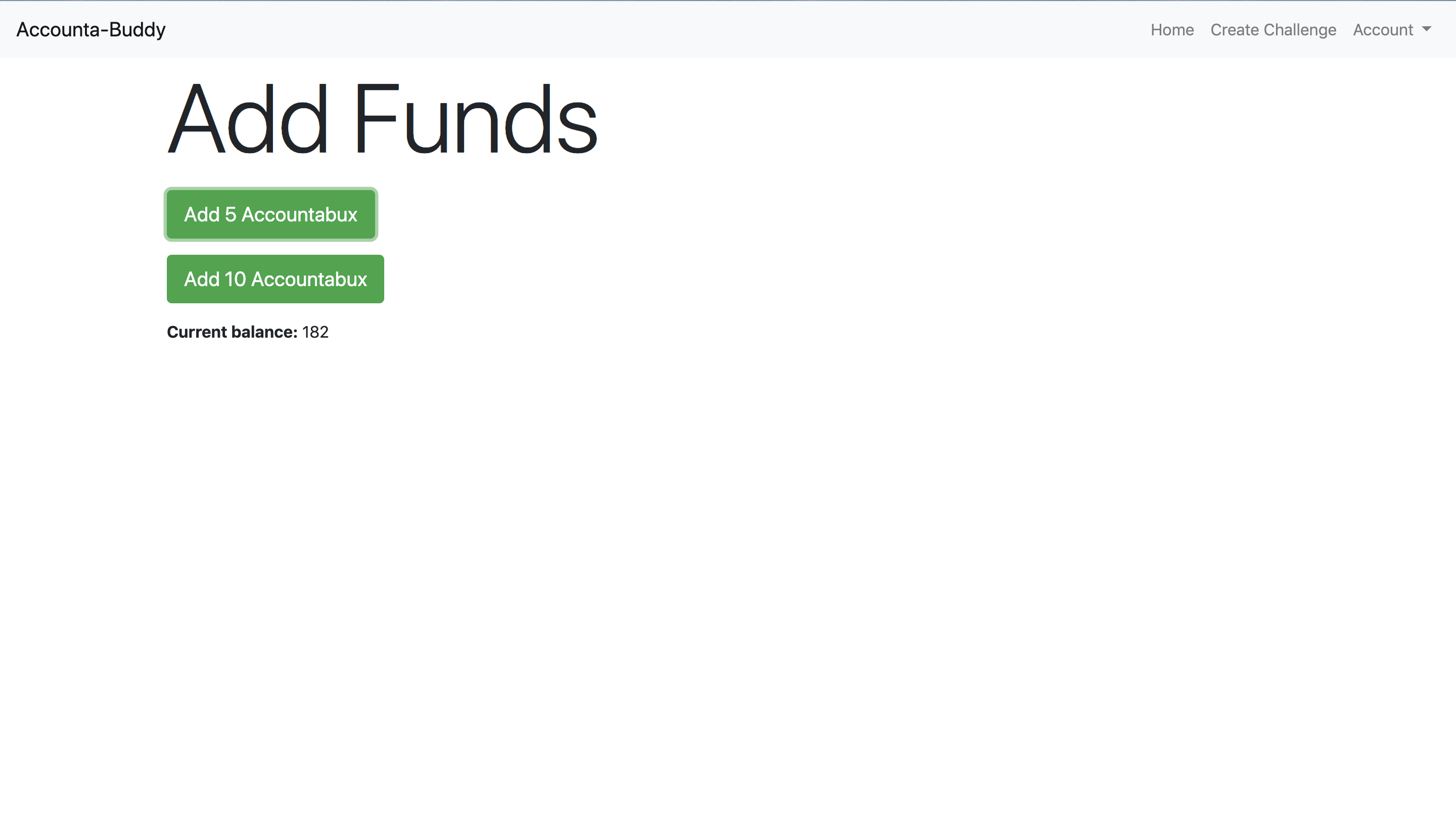
Conclusions
Thanks to this project, I was able to learn a lot about the design process of a web application at multiple stages. In particular, I was able to work with a lot of web development tools, in particular Firebase.
Because of the scope of the class, we were not able to implement a more detailed display of activity, or perform testing with a potential user base. If I had more time, I would have definitely iterated on the design based on user feedback and testing.